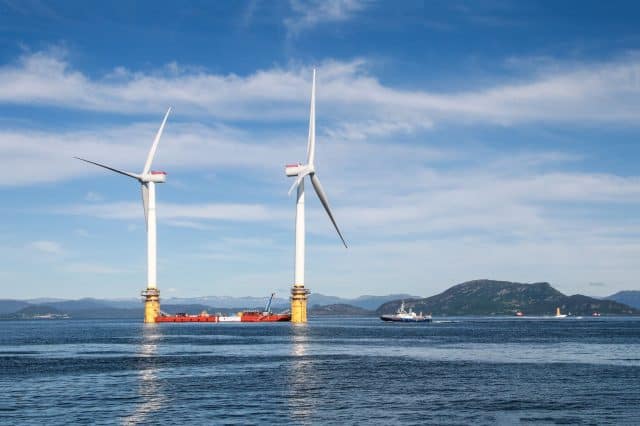With the way nonrenewable energy causes climate change, the best energy to go for is the renewable, such as wind which will cause us less catastrophe.
The benefits of wind power are well known. Wind is clean, in abundance and renewable. Installing much of turbine will really help to wean off the use of fossil fuels. New research and a report from analyst in the fuels suggest that one day there could be more benefits of wind than now: massive installations of wind turbines could reduce the deluge when powerful hurricanes bring a high amount of rain onto the land. Just like the recent storm such as Harvey and Florence – which is a historic level of rainfall. This could have been less flooding and disastrous, and even without death.
According to Cristina Archer, a professor in the University of Delaware’s College of Earth, Ocean, and Environment, said: “Offshore wind farms definitely could be a potential tool to weaken hurricanes and reduce their damage”. From the study published in the journal Environmental Research Letters showing the impact of offshore turbines on hurricane rainfall, she also shows his excitement “And they pay for themselves, ultimately, which is why I am excited about this.
Climate change has to be a contributor to the more intense hurricane in this recent years. The stronger wind experience as the hurricane has it major source from evaporating sea water. The strength of this evaporation depends on how fast water can evaporate from the sea, and when seawater evaporates, it transfers heat from the sea to the atmosphere, which is converted into wind energy thereby causing stronger winds.
As the temperature of the water goes up, so the rate of evaporation and also the wind. The warmer the sea, the faster the evaporation, and climate change is causing high heating.
In the earlier research, Archer describes that offshore wind farm absorbs kinetic energy from hurricanes, thereby reducing the effect of the wind and storm. Her recent study suggests that the turbine could also decrease the rate of rainfall for onshore downstream to the wind farm when deployed massively. The motivation for this new study was basically Harvey itself, Archer said, “It dumped an incredible amount of rain, and it was the rain that actually caused the flooding in the Houston area.”
It is important to know and understand the factors that influence precipitation. Strong hurricane wind reduces when they come across wind turbines, and tend to move upward since they have no place to go. This boosts the atmospheric moisture and causes rainfall.
“Think about convergence like when there’s traffic on a freeway, and everybody is going fast and then—all of a sudden—there’s an accident and everyone slows down,” Archer explained. “You get a convergence of cars that back up… That’s the convergence upstream of the offshore wind farms. Divergence is similar to what happens when cars finally get past the accident and everybody speeds up.” As convergence and divergence are the factors.
For precipitation to occur, there must be an upward motion to bring moisture filled air into the atmosphere, where it condenses and cause rainfall. “To get upward motion near the surface, you need to have convergence. Then, “to kill precipitation, you need downward motion, which is what happens when you have divergence at the surface,” she said. “Obviously, you also need a moisture-rich environment to start with. If you have convergence in the desert, no matter how strong, there will not be precipitation because it is too dry.”
This is the reason why scientists research the impact of offshore wind farms, rather than land-based ones is because hurricanes usually form over water and move quickly when they get to the land. “There is plenty of moisture [offshore], thus it was more likely that we would see an effect,” she said. “We looked at hurricanes because they last long enough that the patterns of convergence/divergence can form and persist. If you think about it, a hurricane lasts for days and causes strong, steady winds from pretty much the same direction from the ocean to the land”.
Turbines are often turn off during high wind which is a major current drawback. Archer said that their computer simulations took the cut off wind speed into consideration. However, manufacturers now are developing new turbines that will be able to withstand stronger winds, such as the hurricane in typhoons, and they are expected to be on market by 2020.
While on research, the scientist with different numerical computer simulations that covered the coast of Texas and Louisiana, examining what may have occurred in the presence of offshore wind farm during Harvey.
“By the time the air reaches the land, it’s been squeezed out of a lot of moisture,” Archer said. “We got a 30 percent reduction of the precipitation with the Harvey simulations. That means, potentially if you have arrays of offshore turbines in an area where there are hurricanes, you will likely see a reduction in precipitation inland…”






